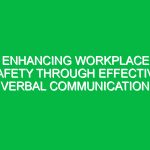Understanding Construction Work Hazards in the HSE Context
Construction work Hazards encompass a wide array of risks that workers face on construction sites. These hazards can lead to significant injuries, fatalities, and long-term health issues if not managed properly. Within the Health, Safety, and Environment (HSE) domain, understanding these hazards is critical to safeguarding the wellbeing of workers and ensuring compliance with legal Standards. By addressing construction work hazards proactively, employers can foster a safer work environment that promotes productivity and mitigates the risk of accidents.
In the bustling world of construction, the stakes are high. Workers operate heavy machinery, navigate precarious heights, and handle potentially hazardous materials. Each of these tasks carries inherent risks that, if left unchecked, can result in tragic outcomes. This article will delve into the various construction work hazards, explore their implications, and provide practical strategies for protecting your team.
Types of Construction Work Hazards
1. Falls from Heights
Falls from heights are among the most common and deadly construction work hazards. Workers on scaffolding, ladders, and roofs face the risk of falling, which can lead to severe injuries or fatalities. According to the Occupational Safety and Health Administration (OSHA), falls account for nearly 33% of all construction-related deaths.
To mitigate these risks, it is essential to implement Fall Protection measures. This includes the use of guardrails, personal fall arrest systems, and Safety nets. Additionally, regular Training on Ladder Safety and proper scaffold assembly can significantly reduce the likelihood of accidents.
For instance, a construction company in Texas experienced a near-fatal incident when a worker fell from a poorly secured scaffold. Following this, they instituted a rigorous training program and conducted daily Safety briefings, resulting in a marked decrease in fall-related injuries.
2. Electrical Hazards
Electrical hazards are pervasive on construction sites, where workers often handle live wires, operate power tools, and work near overhead power lines. Contact with electricity can result in serious injuries, including Burns, shocks, and even death.
To protect workers, it is vital to ensure that all electrical equipment is properly maintained and that workers are trained to recognize and avoid electrical hazards. Implementing lockout/tagout Procedures can also prevent accidental energization of equipment during Maintenance.
A notable case occurred when a crew in New York was working on a high-rise building and inadvertently cut a live wire. The incident resulted in severe electrical burns for one worker, highlighting the critical need for proper training and awareness of electrical hazards.
3. Struck-By Hazards
Struck-by hazards involve injuries caused by objects falling, flying, or swinging at a construction site. This can include tools, equipment, or even materials being hoisted overhead. According to osha, these incidents account for about 10% of construction fatalities.
To mitigate struck-by hazards, employers should enforce the use of hard hats, establish exclusion zones, and ensure that all tools and materials are secured when not in use. Regular safety audits and employee training can also help raise awareness about these risks.
4. Caught-In or Between Hazards
Caught-in or between hazards occur when a worker is caught in, on, or between machinery and equipment or is crushed by collapsing structures or materials. These incidents can be particularly devastating, leading to severe injuries or fatalities.
To protect against these hazards, it is crucial to implement Safety Measures such as proper training on equipment use, regular maintenance checks, and the installation of safety guards and barriers.
An illustrative case involved a worker who was caught between a wall and a moving excavator. The company subsequently revised its safety protocols by mandating that all equipment operators undergo extensive training, dramatically reducing similar incidents.
5. Respiratory Hazards
Air quality is a significant concern on construction sites. Workers may be exposed to harmful dust, fumes, and chemicals, leading to respiratory issues. Common respiratory hazards include silica dust, asbestos, and vapors from paints and solvents.
Implementing proper ventilation, providing Personal Protective Equipment (PPE) such as respirators, and conducting air quality assessments can help mitigate these risks. Regular training on the dangers of respiratory hazards is equally important in fostering a culture of safety.
6. Noise Hazards
Construction sites are notoriously loud, with machinery, tools, and equipment contributing to high noise levels. Prolonged exposure to excessive noise can lead to hearing loss and other health issues.
To protect workers, it is essential to monitor noise levels and provide hearing protection devices when necessary. Regular hearing tests can also help identify at-risk workers and implement preventive measures.
Regulations and Standards Governing Construction Work Hazards
Various Regulations govern construction work hazards to protect workers’ health and safety. OSHA is the primary federal agency responsible for enforcing Workplace Safety standards in the United States. They provide guidelines on fall protection, Electrical Safety, and other key areas that help mitigate construction work hazards.
1. OSHA Standards
OSHA has established specific standards for construction work hazards, including:
- 29 CFR 1926.501: Fall Protection
- 29 CFR 1926.416: Electrical Safety
- 29 CFR 1926.602: Material Handling and Storage
- 29 CFR 1926.55: Gases, Vapors, Fumes, Dusts, and Mists
These standards require employers to assess hazards, provide necessary training, and implement Safety Measures to protect workers.
2. Importance of Compliance
Compliance with these regulations is not only a legal obligation but also a moral one. By adhering to OSHA standards, companies demonstrate their commitment to worker safety and health. Failure to comply can result in significant penalties, including fines and increased insurance costs, not to mention the human cost associated with workplace injuries.
Best Practices for Managing Construction Work Hazards
To effectively manage construction work hazards, employers should adopt a proactive approach that emphasizes Prevention and education. Here are some Best Practices:
1. Conduct Regular Risk Assessments
Regular risk assessments can help identify potential hazards on construction sites. By evaluating tasks, tools, and environments, employers can implement targeted safety measures to mitigate risks.
2. Provide Comprehensive Training
Training is essential for ensuring that workers understand the hazards they face and how to protect themselves. Regular safety briefings and hands-on training can empower workers to recognize and avoid hazards proactively.
3. Promote a Safety Culture
Fostering a culture of safety within the organization can lead to improved compliance and awareness among workers. Encouraging open communication about safety concerns and recognizing Safe Practices can help create a positive safety environment.
4. Utilize Personal Protective Equipment (PPE)
Providing appropriate PPE is crucial in protecting workers from construction work hazards. Employers should ensure that all workers have access to and are trained in the correct use of PPE.
5. Implement Emergency Response Plans
Having a well-defined emergency response plan can save lives in the event of an accident. Employers should regularly review and practice these plans to ensure that all workers know how to respond effectively.
Conclusion
Construction work hazards are a significant concern that can lead to severe injuries and fatalities if not managed properly. By understanding the various types of hazards, adhering to regulations, and implementing Best Practices, employers can create a safer work environment for their teams.
Ultimately, prioritizing the health and safety of workers not only fulfills a legal obligation but also enhances productivity and morale. As the construction industry continues to evolve, staying vigilant about construction work hazards will be crucial in promoting a culture of safety and environmental responsibility. Protect your team today by making safety a priority—because a safe work environment is not just a requirement; it’s a commitment to the people who build our future.


